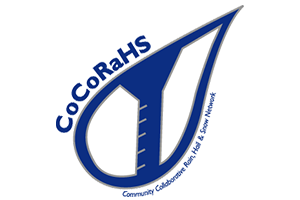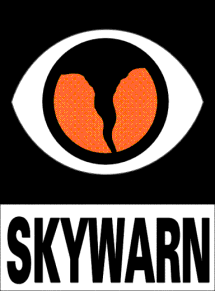The majority of the U.S. is covered by areas where advanced equipment isn’t available to gather critical weather observation data. The NWS relies on dedicated community members to fill this critical need. Provided by people on the ground across the nation, these observations are used in some cases to provide immediate life saving action, and in others provide important data for research that leads to advances in life saving technology.
CoCoRaHS is a non-profit network of thousands of volunteers working together to help map precipitation across United States, Canada, and the Bahamas. The word CoCoRaHS itself is an acronym that stands for the Community Collaborative Rain, Hail and Snow Network. Volunteers in the network are trained to use low-cost tools to measure all varieties of precipitation like rain, hail, and snow. They then enter that information into a centralized database on the internet, and those data are used by a wide variety of entities including the National Weather Service.
 |
| CoCoRaHs is a volunteer precipitation observing program. |
The NWS Coop consists of thousands of volunteers who take weather observations on farms, in urban and suburban areas, National Parks, seashores, and mountaintops. The data are truly representative of where people live, work, and play. The Coop was formally created in 1890 under the Organic Act, but many Coop stations began operation long before that time. At each Coop weather station across the nation, observations of daily maximum and minimum temperatures, snowfall, and 24-hour precipitation totals, are taken. Observers generally send these data electronically every day to the NWS and the National Centers for Environmental Information (NCEI). These data are used to help define the climate of the United States and to help measure long-term climate changes.
Coop observational data supports the NWS climate program and field operations, and the program supports the collection of observations in a variety of ways, including selecting sites, recruiting and training observers, installing/maintaining equipment, data quality control, and more. Equipment used at NWS cooperative stations may be owned by the NWS, the observer, or by a company or other government agency, as long as it meets NWS equipment standards.
 |
| Instruments used in the Cooperative Observer Program. |
SKYWARN is a volunteer program established by the National Weather Service (NWS) that consists of around 400,000 trained severe weather spotters. These volunteers help keep their local communities safe by providing timely and accurate reports of severe weather to the National Weather Service. Although SKYWARN spotters provide essential information for all types of weather hazards, the main responsibility of a SKYWARN spotter is to identify and describe severe local storms. Since the program started in the 1970s, the information provided by SKYWARN spotters has been critical in supporting warning operations in local NWS offices across the nation, supporting the goal of issuing more timely and accurate warnings for tornadoes, severe thunderstorms and flash floods.
 |
| SKYWARN volunteers are called Storm Spotters. |